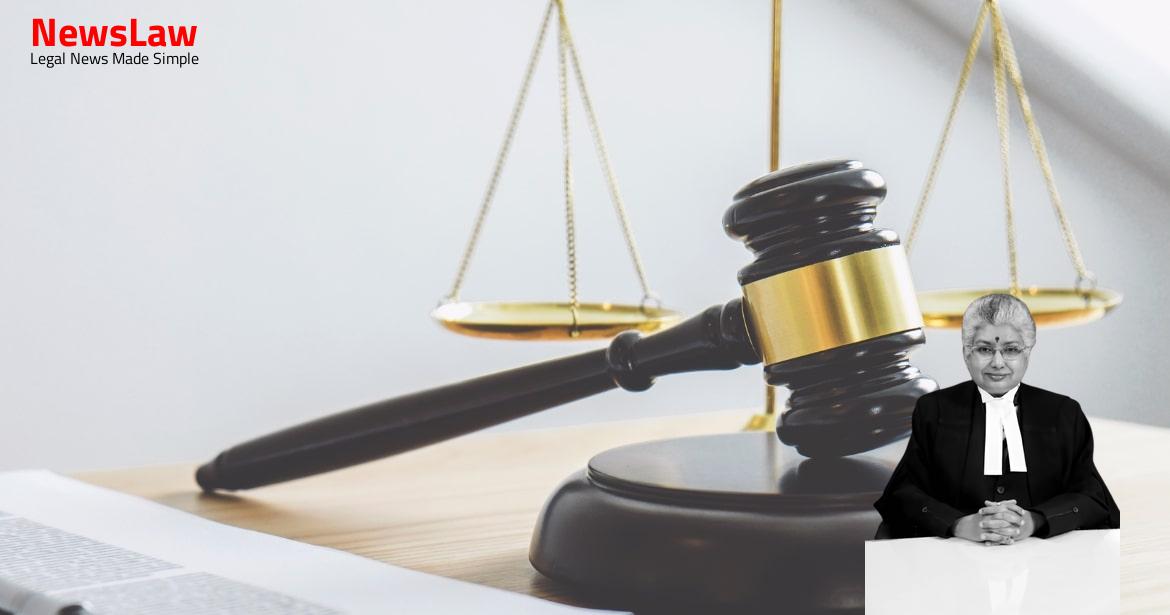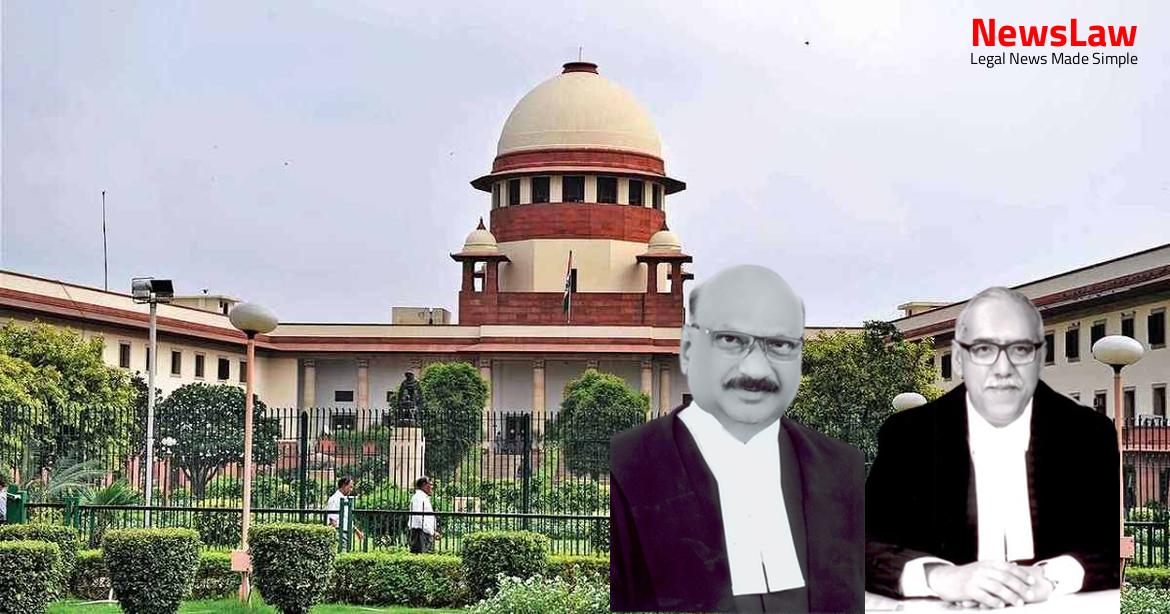In a recent landmark ruling by the Supreme Court of India, the case between the State of Punjab and the Accused has reached a pivotal moment. The judgment focused on the validity of the convictions under Sections 302 and 201 of the IPC. This decision sheds light on the complexities of legal proceedings and the crucial role of evidence in determining guilt or innocence in the case. The Court’s analysis delves deep into the testimonies and circumstances surrounding the incident, providing clarity on the outcome and implications of the trial.
Facts
- The State of Punjab challenged the judgment dated 17 July, 2014, rendered by the Division Bench of the Punjab and Haryana High Court in two appeals.
- The trial Court had convicted Surjit Kaur @ Seeto(A3) and Randhir Singh(A1) for the offence under Section 302 IPC, while Karamjeet Kaur(A4) and Baldev Singh(A2) were convicted under Section 302 IPC read with Section 34 IPC.
- Each accused was sentenced to undergo rigorous imprisonment for life and pay a fine of Rs. 1,000 each, with default leading to additional imprisonment.
- Babu Singh(A5) was acquitted as the prosecution failed to produce evidence of his participation in the alleged offence.
- The accused appealed the trial Court’s decision before the High Court of Punjab and Haryana.
- The High Court allowed the appeals, acquitted the accused, and set aside the trial Court’s judgment.
- Kewal Singh(DW-5) stated that his house is situated on the southern side of the house of Randhir Singh(A1).
- Smt. Kuldeep Kaur made an oral dying declaration holding the accused responsible for her condition.
- Two dying declarations of the deceased were recorded, one by Surjit Singh, ASI(PW-11) and the second by Ramesh Kumar Jain, Naib Tehsildar(PW-7) acting as an Executive Magistrate.
- Surjit Singh, ASI(PW-11) is a key witness of the prosecution.
- Witnesses from both sides were examined to prove their perspectives on the incident.
- The accused denied the allegations and claimed innocence during the trial.
- Medical evidence and statements from various witnesses were crucial in determining the sequence of events.
- The incident involved allegations of harassment, torture, and a motive fueled by disputes within the family.
- The victim’s condition and statement were pivotal in the case proceedings.
- The role of each accused was discussed in relation to the charges filed against them.
- The court also considered the history of conflict resolution attempts between the deceased and the accused.
- The case was committed to the Sessions Court due to the severity of the offense.
- The timeline of events and actions taken by the witnesses and authorities were carefully analyzed during the trial.
Also Read: Employees’ State Insurance Corporation vs. Nagar Nigam: Workshop Classification under ESIC Act
Arguments
- The respondents were the only persons present in the house when the incident occurred, indicating they were the victim’s assailants.
- The dying declaration (Exhibit-PM) was recorded after ensuring the victim’s fitness by the duty doctor and resulted in the prompt registration of the FIR.
- There is strong evidence of the victim being harassed and humiliated by the accused in her matrimonial home.
- The High Court’s decision on the reliability of the first dying declaration (Exhibit-PM) was criticized by the petitioner’s counsel.
- The petitioner’s husband was accused of being in an illicit relationship with the victim’s sister-in-law, leading to the victim’s harassment.
- Multiple witnesses provided reliable accounts of the victim’s oral dying declaration at the hospital, supporting the dying declaration (Exhibit-PM).
- The petitioner’s counsel argued that the trial court’s conviction based on the dying declaration (Exhibit-PM) was justified.
- The accused had a strong motive to eliminate the victim due to the illicit affair and a resulting panchayat held by the victim’s relatives.
- The judgment of the High Court was criticized for ignoring the dying declaration (Exhibit-PM) which was admissible evidence.
- The victim’s statement mentioned being harassed by her in-laws for objecting to her husband’s illicit relationship.
- The petitioner’s counsel emphasized the consistency between the oral dying declaration and the recorded dying declaration (Exhibit-PM).
- The petitioner’s husband was accused of physically assaulting the victim after the objection to the illicit relationship with her sister-in-law.
- The dying declaration (Exhibit-PM) recorded by Surjit Singh, ASI(PW-11) was deemed credible by the State counsel.
- The victim also faced character assassination from her in-laws, as per the arguments presented.
- The High Court held that the dying declaration recorded by Surjit Singh, ASI was a post-investigation document manufactured to falsely implicate the accused.
- Surjit Singh, ASI did not make efforts to call the concerned Magistrate immediately, raising suspicion on the authenticity of the statement.
- The dying declaration made before Ramesh Kumar Jain, Naib Tehsildar did not specifically point to any family member for the crime.
- The victim did not mention any ill treatment at the matrimonial home and stated she had no idea who set her on fire.
- The High Court rightly discarded the dying declaration before Surjit Singh, ASI as a subsequently created document.
- The High Court’s interference with the conviction of the accused was justified and the impugned judgement does not warrant any interference.
Also Read: Dismissal of Writ Petitions by Supreme Court in Mr. R.S. Madireddy v. Talace India Pvt Ltd. Case
Analysis
- The prosecution story is considered unnatural and unbelievable due to manifest contradictions in the two dying declarations.
- No corroborative evidence supports the claim that any dying declaration was recorded.
- Witnesses failed to mention the recording of dying declarations by Surjit Singh, ASI, or Ramesh Kumar Jain, Naib Tehsildar, casting doubt on their presence at the hospital during the recordings.
- Witnesses’ close relationship with the deceased raises skepticism about their testimonies as being biased and unreliable.
- Contradictions in the statements of prosecution witnesses regarding the cause of harassment and events leading to the incident create doubts.
- The absence of a concrete motive for the accused to commit the crime weakens the prosecution’s case.
- Allegations of kerosene being poured on the victim and setting her on fire are not conclusively proven.
- The two dying declarations differ significantly in detail and named individuals involved in the incident.
- Different witness accounts and lack of concrete evidence point to the innocence of the accused.
- High Court’s decision to overturn the conviction is supported as it shows a proper evaluation of the evidence.
- The limited scope of interference in appeals against acquittal is upheld, leading to the dismissal of the appeals.
- The appellant challenged the judgment of the High Court which upheld the trial court’s decision to convict him under Sections 302 and 201 of the Indian Penal Code.
- The appellant specifically challenged the reliance on the testimony of the approver in the case.
- The Supreme Court analyzed the evidence and found that the approver’s testimony was corroborated by other evidence on record.
- The Court emphasized that corroboration is necessary only in cases where the approver is not reliable or is a tainted witness.
- In this case, the approver’s testimony was found to be reliable and trustworthy, making corroboration not a mandatory requirement.
- Ultimately, the Supreme Court upheld the conviction of the appellant under Sections 302 and 201 of the IPC.
Case Title: STATE OF PUNJAB Vs. RANDHIR SINGH (2024 INSC 489)
Case Number: Crl.A. No.-000660-000661 – 2015



